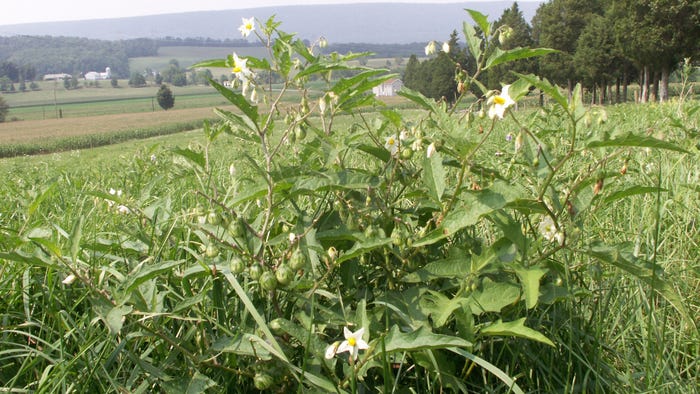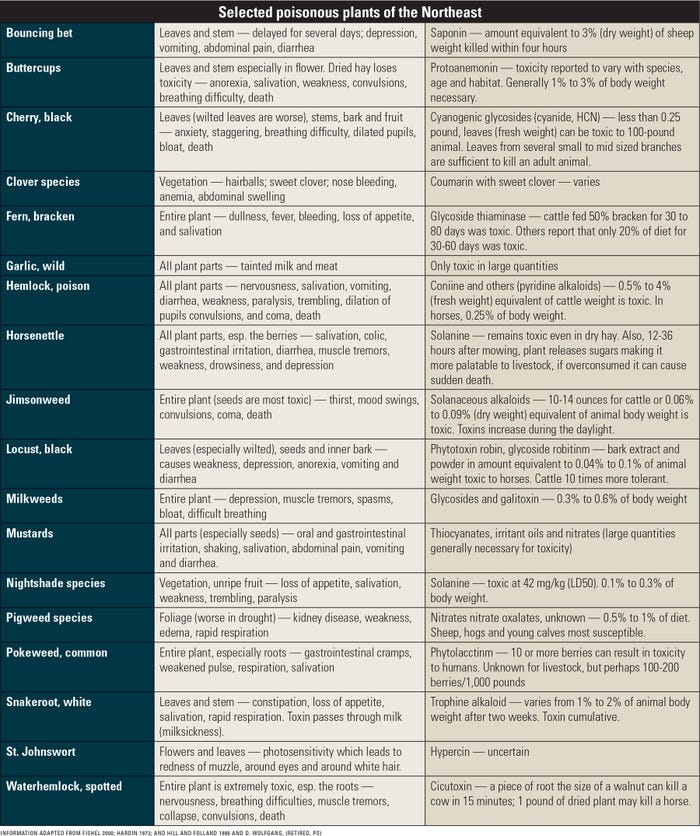May 26, 2023

Courtesy of Dwight Lingenfelter
by Dwight Lingenfelter
During drought and the usual summer slump that reduces forage growth, there are concerns for poisonous weeds in pastures and hay.
Livestock may be forced to graze on weeds they normally would not, or they may eat weeds out of curiosity. It is important to scout your pastures and remove these weeds — or broken limbs and leaves — before they cause health problems in your animals.
Check out these poisonous plants that are often seen throughout the Northeast and Mid-Atlantic.

There are numerous poisonous plants that could invade an area or pasture. Many plants contain potentially poisonous substances that may be toxic to livestock if consumed in large enough quantities.
In addition, certain plants may be problematic because of mechanical irritation when eaten; photosensitization; and disagreeable tastes or odors in meat, milk or milk products.
If you suspect livestock poisoning, call your local Extension educator or veterinarian immediately. If death occurs, the stomach contents should be examined for consumed herbage. Identify the suspected plants and remove livestock from the grazing area until all poisonous plants have been removed or destroyed.
Here are some more key points about weed forage quality and poisonous plants:
• Some weeds have excellent nutritive quality.
• Weeds in the vegetative stage of development usually are more nutritious than more mature weeds.
• Regardless of weed quality, livestock may avoid grazing certain plants because of taste, smell or toxicity.
• Some plants contain potentially poisonous substances that may be toxic to livestock if consumed, so properly identify potential problem weeds and consult with a veterinarian if necessary.
• A productive pasture is important to reduce the potential incidence of toxic weed exposure to livestock. Remember to soil test and maintain the proper lime and fertility levels.
• If possible, routinely mow or spray to manage weed problems within and around the pasture area.
Recently, there has been some research that suggests that for every pound of weeds present in pastures, available desirable forage is reduced by 1 to 1.5 pounds. So, if a pasture is weedy, there is a lot of forage that is not being consumed by the livestock, or the forage is unable to compete with the weeds.
For additional information and resources on plants that are poisonous to livestock, see these sites:
• The Weed Science Society of America
Lingenfelter is an Extension associate of weed science with Penn State Cooperative Extension.
You May Also Like




